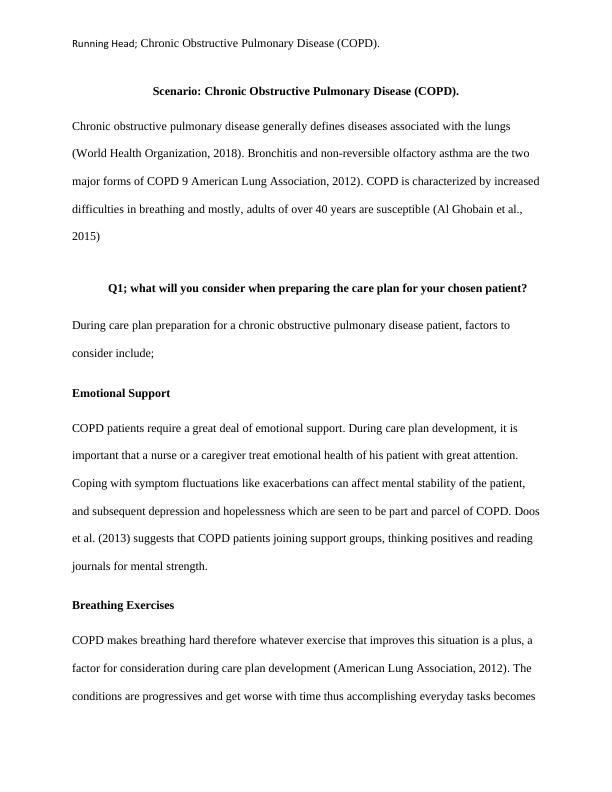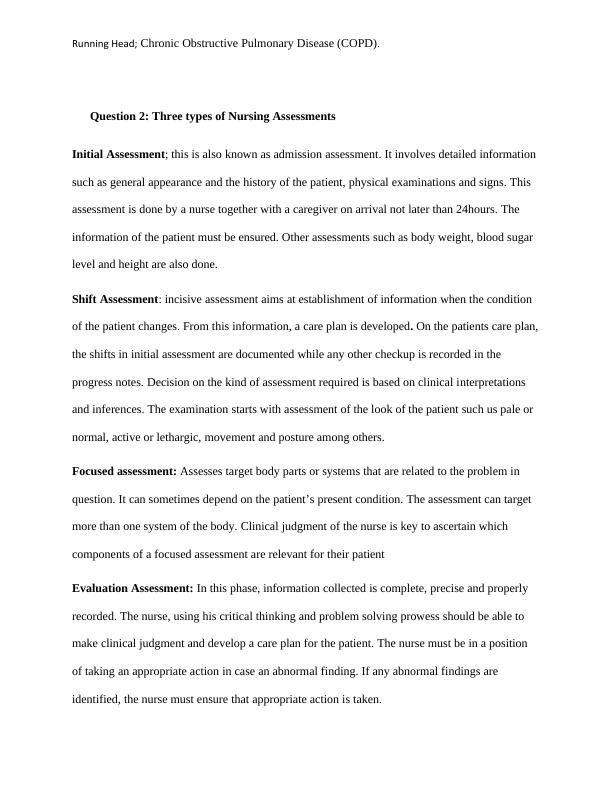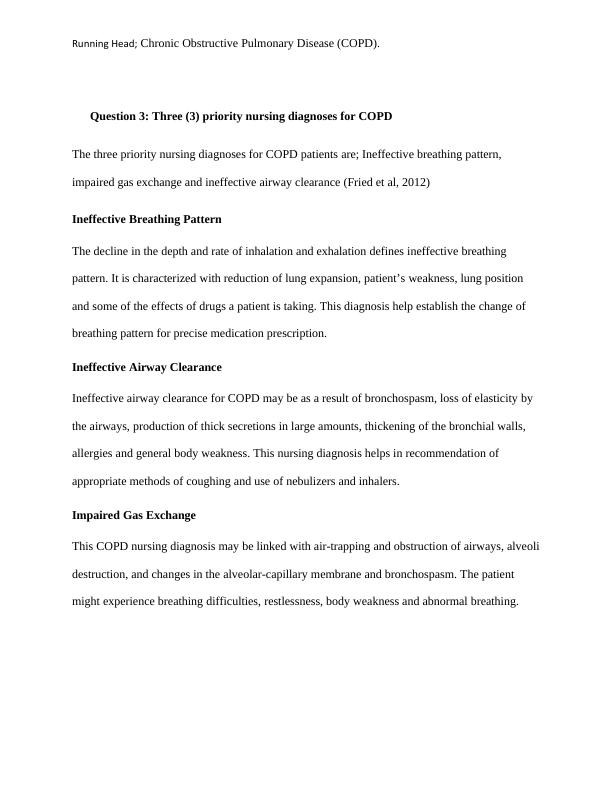Care Plan for COPD Patients
This assignment requires you to focus on the holistic care of a patient admitted to hospital with an acute presentation of a chronic condition and to demonstrate your ability to apply the clinical reasoning cycle to develop and plan nursing care.
11 Pages3193 Words47 Views
Added on 2023-01-16
About This Document
During care plan preparation for a chronic obstructive pulmonary disease patient, factors to consider include emotional support, breathing exercises, nutrition, and exercise.
Care Plan for COPD Patients
This assignment requires you to focus on the holistic care of a patient admitted to hospital with an acute presentation of a chronic condition and to demonstrate your ability to apply the clinical reasoning cycle to develop and plan nursing care.
Added on 2023-01-16
ShareRelated Documents
End of preview
Want to access all the pages? Upload your documents or become a member.
Holistic Care: Considerations, Assessments, Planning, Education, and Team Care for COPD Patients
|9
|2555
|348
Importance of Pulmonary Rehabilitation for COPD Patients
|6
|1583
|58
Description of COPD Assignment PDF
|1
|722
|18
Chronic Obstructive Pulmonary Disease Essay
|12
|2476
|154
Chronic Obstructive Pulmonary Disease: Causes, Symptoms, and Management
|8
|1846
|26
Case Study of Patient with COPD
|7
|1864
|37




